A Midwife In Amish Country: Author Kim Osterholzer Answers Your Questions (Plus Book Giveaway)
Do Amish parents have celebrations for new babies? Who is present at the birth? What does it take to be a good midwife? What if you get to the birth late? Do Amish have children out of wedlock?
Thanks to everyone who submitted questions for A Midwife in Amish Country author Kim Osterholzer. I chose a selection of these which Kim has answered, plus a few of my own (around 20 total). Kim calls your questions “fantastic,”and takes on a wide range of them, including those above. You’ll see Kim really went above and beyond in her answers, so a big thank-you to her.
Enter to Win an Autographed Copy of A Midwife In Amish Country
 You can also enter to win an autographed copy of A Midwife In Amish Country.
You can also enter to win an autographed copy of A Midwife In Amish Country.
To do so, just leave a comment on this post (note: good news, if you already entered by submitting a question for Kim, you can enter a second time by commenting here). I’ll draw a random winner next week.
Kim Osterholzer on Being a Midwife To the Amish – Your Questions
Kim Hansen – Do you ever have a high-risk patient that you need to refer to a specialist? Have you ever had to send a woman to the hospital because there could be problems with the birth? How often does this happen?
Kim Osterholzer: As a homebirth midwife, I only take on low-risk moms. Unfortunately, on occasion a formerly low-risk mom transforms into a high-risk one. My current statistics reveal an 8% transfer rate among my clientele pre-birth, with 6.5% of my clients requiring transfer to the hospital while actually in labor. Similarly, though much less frequently, a mom or baby will require transport to the hospital after birth. In my practice that equates to 1% of mothers and less than half that of babies.
For a closer look at the safety of homebirth, consider viewing the documentary, Why Not Home? Why Not Home? explores the issue from the perspective of medical professionals—obstetricians, general practitioners, nurse practitioners, nurses, and midwives—who’ve chosen to give birth at home.
Jim Boles – Does the father or other family members attend?
Kim: Not only do the fathers attend the births, they fairly without exception serve as the mother’s primary support! Additionally, most of the fathers in my practice catch their babies themselves! My own husband caught both of our homeborn children!
Here are a couple blog posts I wrote on the subject: http://www.kimosterholzer.com/13/homebirthing-daddy-brent-woodard/ and http://www.kimosterholzer.com/19/my-favorite-part/. One of my client’s submitted a story he wrote about catching his second son for publication in a book called The Many Faces of Homebirth, compiled by Shantel Silbernagel.
Sue Terrell – I was wondering if any young women have children out of wedlock? I know sometimes they are shunned, but are some forgiven and have their child in the parent’s home?
Kim: Oh, yes, though I’ve not served so many unmarried women as married, especially among the Amish.
I don’t believe any of the young unmarried Amish women I tended were shunned, however, as I don’t believe any of them had yet been baptized. Shunning generally occurs when a baptized member of the church steps away from its tenets.
Stephanie H – Do the Amish have any celebrations for the baby before/after it arrives?
Kim: The Amish, as a rule, don’t officially acknowledge their pregnancies until their babies are safely born. But once their babies are born, word is spread by sweet little announcement cards adorned with birthweights and footprints, and a notice is often printed in Die Blatt. The weeks that follow are then filled with a great many visitors laden with meals and gifts, if not by an organized community celebration.
Laurie Dekindt – I remember when I was pregnant I wanted to know the doctor who would be delivering my baby. It made me trust him and made me feel safer for me and for my growing baby. Do you try to know the women you deliver? Do they ask for visits before the birth? If you do, I can only imagine the friendships you must gain both before and after the delivery.
Kim: Oh, yes! I know the families I serve very well—and many times I’ve served a number of families within a single extended family and spanning generations! One of the babies I caught in the first year of my apprenticeship went on to bring forth one of her babies—her first—into my hands!
I see my clients every four weeks from week 10 or 12 through week 28, every two weeks from week 28 through week 36, then every week from week 36 through birth. Each visit lasts between one and two hours. Then I see my clients at least four times through the first six weeks after birth, again, for one to two hours per visit. Naturally though, I pop in on my clients as many additional times as may be required, and I’m always available by telephone. I spend an average of eight to ten hours at each birth, but have been at births for as long as thirty-five to fifty-two to sixty-six hours, with the care I provide at births shared by an assistant under my supervision.
Only occasionally am I unfamiliar with a woman in my service, and that’s exclusively when I serve another midwife’s client in a pinch.
Pam Colle – What has been the hardest delivery for you and what made you want to become a midwife for the Amish?
Kim: The hardest birth I was called upon to attend was that of a young Amish couple and their first baby. A catastrophic event too emergent to accomplish a successful transport to the hospital occurred. The event severely compromised the baby and, though I worked with all my heart and soul and mind and strength to coax the wee little girl to life, I lost her. The second hardest birth I attended was similar, except the tiny baby boy died within his mama six days prior to her labor. I served both women through their subsequent pregnancies and births, and those births were indescribably healing for us all, but I know I’ll carry those lost babies and heartsick parents in my depths till I breathe my own last breath. Here’s a blog post I wrote a about the first birth: http://www.kimosterholzer.com/29/loss-life-anew/.
What inspired me to become a midwife, and one especially for the Amish, was the book, A Midwife’s Story, by Penny Armstrong.
Barbara Hamby – Are you ever too late and the baby has already come? I am a volunteer emergency medical responder and once a lady had already had her baby… I have never been more scared in my life, lol… But considering I have not had kids of my own, I had no idea what to expect, lol…
Kim: It happens on occasion, though I work sooo hard to make it on time! I talk a LOT with my clients in regard to knowing when to call me as most missed births occur when the realization I ought to be called comes a mite late. But when I do miss a birth, it’s generally only by minutes and, thankfully, no one so far has suffered a poor outcome because of my tardiness.
Only once did EMS get called, and that was when another midwife’s client called far, far too late and in the midst of a wild March snowstorm. Being the other midwife’s client, she already lived an hour away from me on a good day. It took me two hours to get there, and then I discovered I’d been given wrong directions! I pounded on door after door before I finally stumbled through the right one, only to find the baby born and the mama ready to birth her placenta. But EMS wasn’t officially called, now that I think of it—the paramedic who lived next door had been summoned. So, she was there, nervous and clearly relieved to welcome me inside. The paramedic went home, I received the placenta, tidied up the mess and tended to the paperwork while mom and baby had a warm snack, then I examined the baby, saw the mom to a shower and potty, tucked them away into bed, and fought my way back home through the ice and drifts.
Gretchen E. – What attributes do you think make for a great midwife? Was there ever a time you thought, “Never mind, this isn’t for me?”
Kim: Wow. What an excellent question.
Humility crowns my list…
I recently presented a talk that dealt with this question at a midwifery conference recently. I believe I’ll share here what I shared there.
The carrying, birthing, and nurturing of babies are profoundly sacred and transformative processes.
The processes of carrying, birthing, and nurturing babies has the power to affect those who experience it for the duration of their lifetimes.
The carrying, birthing, and nurturing of babies are remarkably normal processes that most commonly occur without incident or the need for intervention.
In light of these truths, what birthing souls require most is sensitive, respectful attention and support as the process unfurls.
The word, “doula,” means to serve. The word, “midwife,” means with woman.
While a doula (a labor and birth supporter) is not a midwife nor a midwife a doula, I do feel very strongly that, for the homebirth midwife, the roles of each are inextricably entwined.
Midwives provide continuous, individualized care that recognizes, promotes, and safeguards the normal process of childbearing. The care provided by a midwife is comprised of her knowledge, skill set, experience, and intuition—a portion of which is medical and calls for the use of medical equipment. But a midwife’s chief skills are her ability to connect with her clients and create a safe space for them to be drawn out, to be heard, to have their experiences validated and their needs expressed and met. A midwife teaches, encourages, inspires, empowers, and entrains with her clients as she supports and serves them. A midwife’s best tools are her ears, her knees, her heart, her hands. Though midwives possess the knowledge and skills necessary to negotiate the thrills and challenges that can arise in the midst of birthing, since fully 85% of the time women are able to give birth to babies spontaneously with at least 85% of those babies arriving vigorous and thriving, most of a midwife’s time is spent examining, reassuring, heartening, explaining, soothing, feeding, watering, wiping, tidying, and charting. We do a lot of admiring, too.
Midwives individualize the care they provide, allowing the results or their measurements and assessments to be influenced and tempered by the beliefs, the hopes, the desires, the history, and the dreams of the women she’s poised to tend.
A midwife’s commitment is to be with a woman as she experiences her stunning metamorphosis—helping her to create an environment just right for the carrying, birthing, and nurturing of her baby, and then watching over it.
At the conference I shared a letter a new mom wrote to my daughter, Hannah, also a midwife—that illustrates these points to perfection. I shared the letter on my blog as well: http://www.kimosterholzer.com/27/thank-you-midwife/.
As to the second part of the question, “Was there ever a time you thought, ‘Never mind, this isn’t for me?’”
No, I never have had that thought, though midwifery has indeed ushered me into the very most painful moments of my life—moments more painful even than the loss of my young husband eleven years ago.
Midwifery is a paradoxical calling. I’ve never experienced anything quite so rewarding as serving a family while they welcome their newest baby into life. Nor, however, have I experienced anything so deeply painful as failing a family by losing their baby.
Suzanne Sellner – It sounded in the early part of this blog that you trained as a midwife and were with the Amish for a decade. Do you still work as a midwife, and, if so, do you serve the Amish community or the non-Amish community? Do the midwives provide follow-up care for the babies or just work with the mothers and babies until the babies are born?
Kim: I served both the Amish and non-Amish of southwest Michigan throughout my nine-year apprenticeship, then I served all the above an additional eleven years as a primary midwife prior to moving to Colorado in 2014. I’ve served many lovely families in Colorado since that move, though none of them are Amish as there’s no Amish communities near enough to Colorado Springs for me to safely serve. My daughter, Hannah, is a midwife and she continues to serve the Amish and non-Amish communities I once did. Of course, that means I still am able to see and often to serve my many dear friends through the times I visit Hannah in Michigan.
Officially, I serve families with regularity through the sixth week of a new baby’s life. My record for postpartum visits is twelve through the first fourteen days, not counting my grandbabies. Unofficially, it’s a rare family I don’t remain in contact with. In the last few weeks alone I’ve been called by a handful of former clients, many Amish, to discuss a concussion, an irregular menstrual cycle, a new supplement on the market, a case of hands-foot-mouth disease, and to pray with a family at the start of their labor who moved to another state after the birth of their last baby. Such is the regular course of a midwife’s life, and I love it!
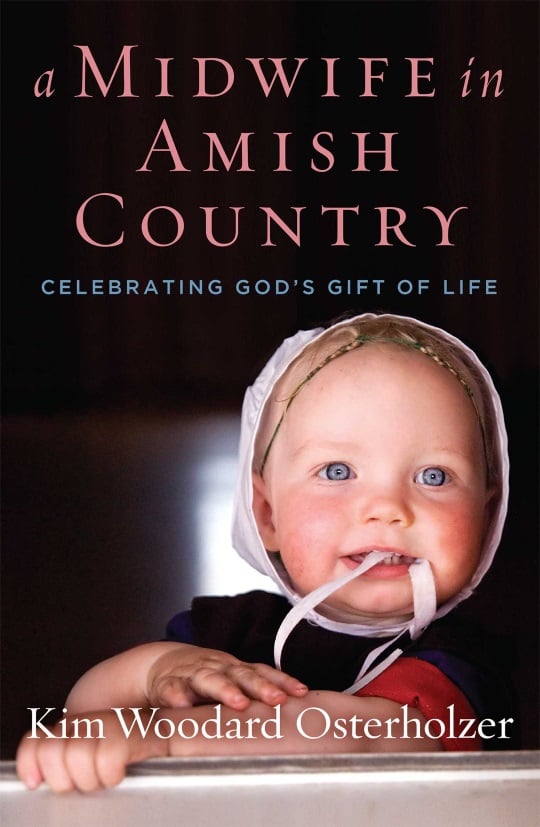
Jennifer Babcock – What are some of your funniest moments while being a midwife?
Kim: Oh! There have been many, to be sure! Many, many, many of them are described in my book! Many I hope to describe in a future book!
Besides the times I’ve found myself desperate for food, a bed, a brush, or a bathroom and the amusement such desperation is able to produce, there’s fodder for a great deal of fun with the mixing of cultures, and it’s forever the children that steal the show!
Couple the fact most Amish children are kept in the dark regarding the arrival of their siblings with the language barrier, and the Englisher midwife is cloaked with mystery—mystery that just MUST be plumbed by busy, curious minds. Innumerable bright-eyes watch me closely as I come and go, asking all manner of unintelligible questions and marking my appointment bag for exploration should it happen to be left inadequately attended. Following the rare occasions I actually have left my bag ill attended, I’ve been surprised by all sorts of items, from sticks to toys to candy wrappers, stashed beside my blood pressure cuff and fetoscope and scales—as well as treated to an assortment of downcast countenances that reveal hopes of finding a baby somewhere inside had been harbored.
Though the children are kept ignorant per the impending arrival, they’re often allowed to remain home when I come to visit, rendering communication between Mamm and me vague while in the presence of said children and, for portions of our visits, necessitating a retreat to a bedroom. Once we’re behind closed doors, the fun begins in earnest. The door itself is immediately accosted by many pairs of little hands turning the knob this way and that, by fingers wiggling beneath the crack, by eyes squashed against the key hole until the door is abandoned for an assault at the windows. There the children hop tirelessly in their effort to see what in the world Kim is doing to Mamm, arms and heads flailing about and knocking against the glass.
When I pull into Amish driveways, I’m often greeted by a chorus of voices, “Mamm! Mamm! Kim iss un koma!” Then my car is surrounded, my doors pulled opened, my bags fondled, while the chorus rises an octave, “Hi, Kim! Hi, Kim! Hi, Kim!”
Once upon such an arrival, I was apprehended by a blue-eyed, tousle-headed toddler, the brother of a newly-born baby girl.
“Kim! Have you come to see the baby?” he asked in Deutsch, his older sister translating.
I smiled, “I have!”
“Well,” he said, spreading his hands, “You may have her if you like her!”
Apparently, he felt the little sister who’d joined the family a year or so before the newest little sister was little sister a-plenty. He’d attempted to gift the baby to his grandparents earlier in the day, as well as to an Aunt and Uncle.
Alex Knisely – If you were to encounter Mrs. Eicher or Mrs. Schwartz — the two Indiana Amishwomen who recently have been in trouble for practicing midwifery — say, in the aisles at the Geneva, IN Wal-Mart — what would you say to them? If you were to reach out to them as colleague to colleague, what would you say to them?
Kim: What a very challenging question!
I was deeply concerned when word trickled in the women had elected to practice in a variety of ways contrary to accepted midwifery practice. I was told they received the bulk of their training from a medical doctor rather than from a homebirth midwife, which may very well explain the disparities in practice and their unfortunate ramifications. While there certainly are areas of overlap in the care each provides, doctors are not midwives and midwives are not doctors, and it’s vital the two professions remain distinct, respecting and appreciating each their own purposes, strengths, skill sets, tools, and limitations.
Still, realizing I’ve only heard their stories second-hand at best, if I ran into them while out and about, I’d wrap them each in a hug and invite them to tell me their versions of their stories themselves. I believe we all owe one another such courtesy.
Kathy Rowe – How old was the youngest patient you had to deliver a baby for? Were there complications with that case?
Kim: The youngest woman I’ve served through birth was a sixteen-year-old girl in Haiti. Thankfully, her birth proceeded as beautifully as birth usually proceeds, though general concerns of her life were sobering.
The youngest American I’ve served was an Amish woman of eighteen. She also enjoyed a very lovely birth.
Cynthia Bliss – What was the oldest woman that you helped give birth?
Kim: The oldest woman I’ve served was a forty-six-year-old birthing her tenth baby! Her story is described in the sixteenth chapter of my book and places among my favorites to this day!
Ann – Is family planning allowed in the Amish communities where you work? Do you advise on that? Have you seen woman whose health was harmed by having too many children?
Kim: I certainly have seen how hard it can be on a woman who births so often she’s unable to recover adequately between times, and the affects upon such a woman’s body and soul have a tendency to increase exponentially baby by baby.
Medical contraception is forbidden among the Amish, but natural family planning is acceptable to some. I provide a great deal of information and counsel about natural family planning methods to those seeking to benefit from its secrets.
The following are some questions from me – Erik
The copy uses the term “catching babies” to describe what you do… I thought this was a funny and warm way to put it, but of course there is more to it than this. What sort of training does a midwife need to have? How do you get certified?
Kim: The reason midwives say we “catch” babies is our objection to the term “deliver.” We believe that to say a provider “delivers” a woman’s baby takes the credit away from that very amazing woman.
I’m a Certified Professional Midwife (CPM). Certified Professional Midwifery is a limb upon one of two branches of the tree that is American midwifery. One branch of that tree is Certified Nurse Midwifery (CNM), a Registered Nurse’s master’s degree. The other is traditional or direct-entry midwifery. CPMs are direct-entry midwives who’ve submitted themselves to the scrutiny and standards of a body of fellow midwives, namely, to the North American Registry of Midwives (NARM), for the purposes of personal accountability and quality assurance. In states that license midwives, the CPM is generally the criterion.
I was trained into direct-entry homebirth midwifery by a direct-entry homebirth midwife—the midwife who attended my own homebirths—through an apprenticeship that spanned nine years and welcomed 123 beautiful babies to life. In 2002, I met the educational and experiential requirements set forth by the NARM; submitted to the eight-hour, 350 question NARM examination; passed with a score of 89%; and became a CPM. I renew my certification every three years with a combination of CEUs and peer review. I earned the NARM Bridge Certificate in 2016.
I’m registered to serve in the State of Colorado as a direct-entry midwife, and am authorized to administer medications specific to well-woman midwifery care, to utilize IV fluids, and to repair first and second-degree lacerations. I renew my registration every year.
I’m a member of the Michigan Midwives Association and the Colorado Chapter of the National Association of Certified Professional Midwifes.
I’ve practiced sixteen years as a CPM in good standing both in southwest Michigan and Colorado, and have attended the births of 561 babies, including multiple vaginal births after cesareans (VBAC), seven sets of twins, and twelve breech babies, with babies ranging in size from 5lbs, 4oz to 12lb, 3oz, born to mothers spanning a full spectrum of particulars and demographics. I’ve even had the privilege of catching a baby born to a woman I caught while I was still an apprentice! Best of all, I was the midwife in attendance at the births of my three grandchildren! My homeborn daughter, Hannah Simmons, is also a CPM with a thriving practice of her own. I’ve mostly served among the Amish populations of Central and Southwest Michigan.
Why do you think some Amish prefer to deliver their babies at home?
Kim: I think at the outset cost is a factor, but once a family, Amish or not, experiences a homebirth, most can’t imagine doing it any other way! Of course, for the non-Amish with insurance or Medicaid, it often is more costly to birth at home.
What’s the largest Amish family you ever came across?
Kim: I stumbled over two Amish women who’d each given birth to twenty children in the first year of my apprenticeship! I wasn’t in their service, however. I’ve served many women birthing their tenth and eleventh babies… I served one woman who’d been pregnant sixteen times but bore only eight children, and one woman who’d been pregnant eighteen times but bore only seven children…
What’s the most rewarding thing about this profession?
Kim: To find you have the strength, especially within a culture that is “delivered” while upwards of eighty percent medicated, to GIVE BIRTH is a powerful revelation for a woman. It’s also a powerful revelation for her man, whether he catches their baby, or not. I loved experiencing that as a mother and wife, and I love ushering others into like experiences!
Beyond that being born into the safety, the peace, the joy, the beauty, the respect, and the reverence of his or her own home, among his or her people, with all the amazing benefits of TRULY evidenced-based care, is a wonderful way to ensure a baby gets off to a most wonderful start in life and I love, love, love facilitating that!
All I have to do to be part of bettering our world is go to work. I wake every single day thanking God He saw fit to call me into this glorious profession.
Personally though, the very most rewarding thing I’ve experienced in all of life is serving my children and their spouses through the homebirths of their children! My daughter has two daughters and my son has a son! Their birth stories may be found on my blog: http://www.kimosterholzer.com/08/evangeline/, http://www.kimosterholzer.com/06/die-now-mi-2/, http://www.kimosterholzer.com/13/footling-breech-pass-thru-fire-mi-3/, http://www.kimosterholzer.com/20/birth-without-fear-mi-4/, and http://www.kimosterholzer.com/27/there-in-newborn-cry-mi-5/.
And the most difficult or challenging?
Kim: The most difficult, challenging aspect of homebirth midwifery is the formidable weight of responsibility. We hold lives in our hands, supremely priceless lives and, for all the glory of our mostly excellent outcomes, those lives are heavy.
Few birthworkers—doctors or midwives—will make it through a career without finding themselves the person responsible in the face of an adverse outcome. There’s an irreducible measure of risk to giving birth, for all the lengths we take to mitigate it. We all—doctors and midwives—approach the work with a desire to bless and wielding our best efforts. But sometimes babies die. Sometimes mothers die. Sometimes someone is damaged. There’s a special sort of anguish in store for the soul responsible for those outcomes.
And with the magnitude of misinformation about the safety of homebirth in our culture, there’s an extra special sort of anguish in store for the homebirth midwife responsible for such an adverse outcome.
I’ll never forget the realization my husband and I had as we prepared to give birth our first baby at home. The facts withstanding, we came to understand as we shared our plans with our family and friends that, if we birthed in the hospital and suffered an adverse outcome, we’d be showered with sympathy and support while, if we birthed at home and suffered such an outcome, the sentiment would have been, “You should have birthed in the hospital.”
It’s just so for the homebirth midwife as well, and that makes the weight of responsibility ever weightier.
Thank you to Kim for her answers. You can get A Midwife in Amish Country in hardcover or Kindle version here.



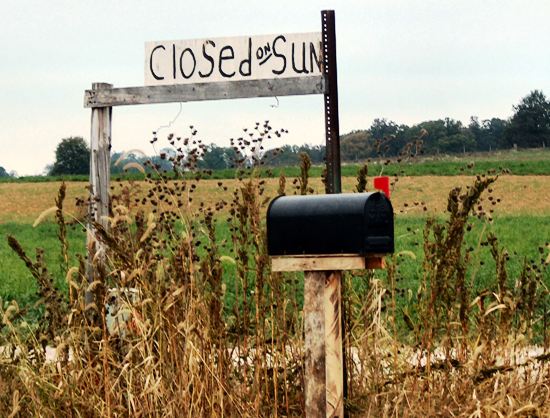

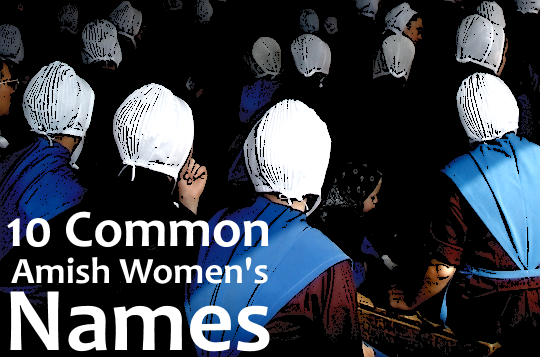
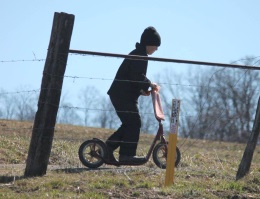
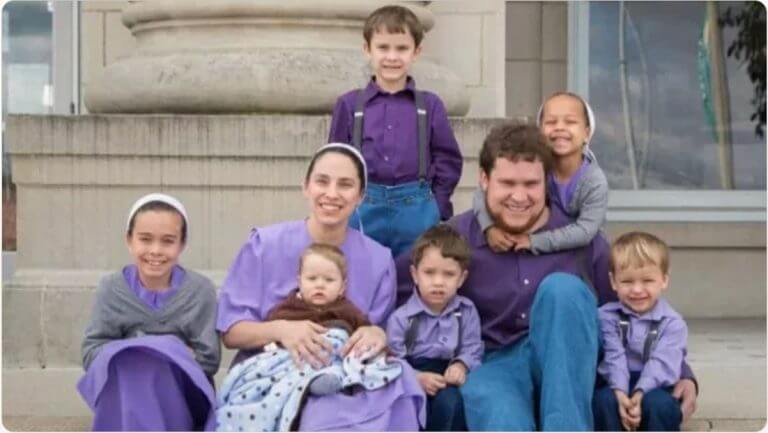
Wonderful
What wonderful questions and answers!
Do some of the fathers avoid the births?
One of my Amish friends said her husband had been at every one of her births! I thought it was wonderful but some English men are rather afraid of watching births:-)
Just Wondering
What did you do to become a certified Midewife. Did you go to school for it.
Motherhood
Motherhood is shared across cultural boundaries and religious faiths. It is always nice to “meet” in that connection to each other.
Karol
Incredible
I love your stories and understand that though an incredible experience, this work can be stressful. Thank you for sharing your stories
Home Birth
I gave birth to my third child at home. My only regret is that I didn’t deliver my first two at home. Thank you for sharing your story.
Thanks!
What a great article – thanks!
Stories to tell my students
I would love to read your book after going through the tough questions you answered. I am a nursing instructor in northern California and some of my students have expressed an interest in becoming nurse midwives. Your book would be a great inspiration for them!
Thank you!
looking forward to reading this book
Thanks for this follow up to the original post. My mother and all of her siblings (11 total) were all born at home, but unfortunately I don’t know who assisted my grandmother. My mom died in 2005 and my last aunt died two years ago, so I guess I’ll never know. Thanks again to Kim for her very thorough answers.
Intrigued
I’m in intrigued with this book and the cover photo.
❤️
I’d love to win this book. The subject matter is very interesting to me.
midwife
Interesting article. Thank you.
Thank you for answering my Amish question and I’m also looking forward to reading your new book.
Twins and Multiple Births
Wow, this is so interesting! Ever since I got hooked on the PBS show, “Call the Midwife,” I’ve been really interested in midwifery. I have another question since I’m the mother of twins, which I delivered vaginally in a hospital. It seems that most non-Amish twins are delivered via C-section. Do you deliver twins and multiples as a midwife or do you send them to a hospital for delivery (or surgery)?
Thanks!!
I appreciate Ms. Kim taking the time to answer these questions!
Rewarding
What a rewarding way to minister to others at such a vulnerable but special time in their lives! Thank you for assisting all those mothers over the years!
Thank you so much for taking the time to answer so many of our questions.
A Midwife In Amish Country
Very interesting interview! Would enjoy reading this book.
Great book!
I love reading the many Amish novels. I would enjoy this book.
Interesting questions and answers. Thank you for posting these. I’m looking forward to reading A Midwife in Amish Country.
What an interesting book. Would love to win a copy.
Wow, I'm floored!
Amazingly beautiful stories and life. My first thought was, “Gee, I wish I’d done it that way,” but honestly both my births were beautiful and I realize they were probably the greatest achievements of my life. It tears me up to think of the respect God has given you for life, His lives. Glory, and thank you, for your service. I’m gonna get your book one way or another.
Would love to win and read this book. Sounds very interesting. The cover is beautiful.
Great questions
This was a very interesting ‘interview’ thank you for sharing. Also, thank you for the chance to win a copy of “A Midwife in Amish Country”, I’m looking forward to reading it.
wfnren at aol dot com
Lovely Cover
Very interesting q & a’s. That has the be the loveliest cover on a book, ever!
If you will answer one more question, I would like to ask:
how do you know this child? One that you caught?
Loretta the cover is actually a Bill Coleman photo and probably not a child that Kim knows, see my comment to Jessica below – Bill was best known for his photographs of the Amish in the Big Valley community in central Pennsylvania.
Very interesting post. I’d love to read the book!
So interesting!
I have had 10 homebirths myself . My first one was attended by a lady(retired) who used to be the head maternity nurse in the hospital, and once a midwife from out of town was visiting a friend and came when I went into labor. In those days is was not legal to have a midwife in Alabama. So glad things are changing here! Thank the Lord all went well in my births, but so glad for those who want homebirths and can be blessed to have a good midwife! I have attended many births and it is quite intense, but such a victory when the dear babies are born! God bless you!
Wow.
Interesting!
This was an very interesting blog about mid-wifery. Guess your never to old to learn new and interesting things! I’d love to read the book!
Wonderful
Thoroughly enjoyed this Q&A session. I am eager to read her stories more. And I must say, what an adorable me child on the cover. What Amish group is she from?
Jessica that’s a Bill Coleman photo, and he was best known for his photos of Nebraska Amish. I’m pretty sure that’s the group this little girl would be from.
https://amishamerica.com/bill-coleman-on-amish-photography/
http://amishphoto.com/
Loved reading your comments
What interesting reading. I have a grandniece who is a midwife in Bolivia.
Great Information
What a great article! Thank you Erik and Kim Osterholzer for a really informative article.
Great information!
Wonderful questions and answers! I look forward to reading Kim’s book.
After Care
Do Amish Midwives ever council new mothers on after care – both for themselves and their babies? Are there recovery times and does the midwife check back after the birth has occurred?
Lovely thoughts
What a wonderful and beautiful profession.